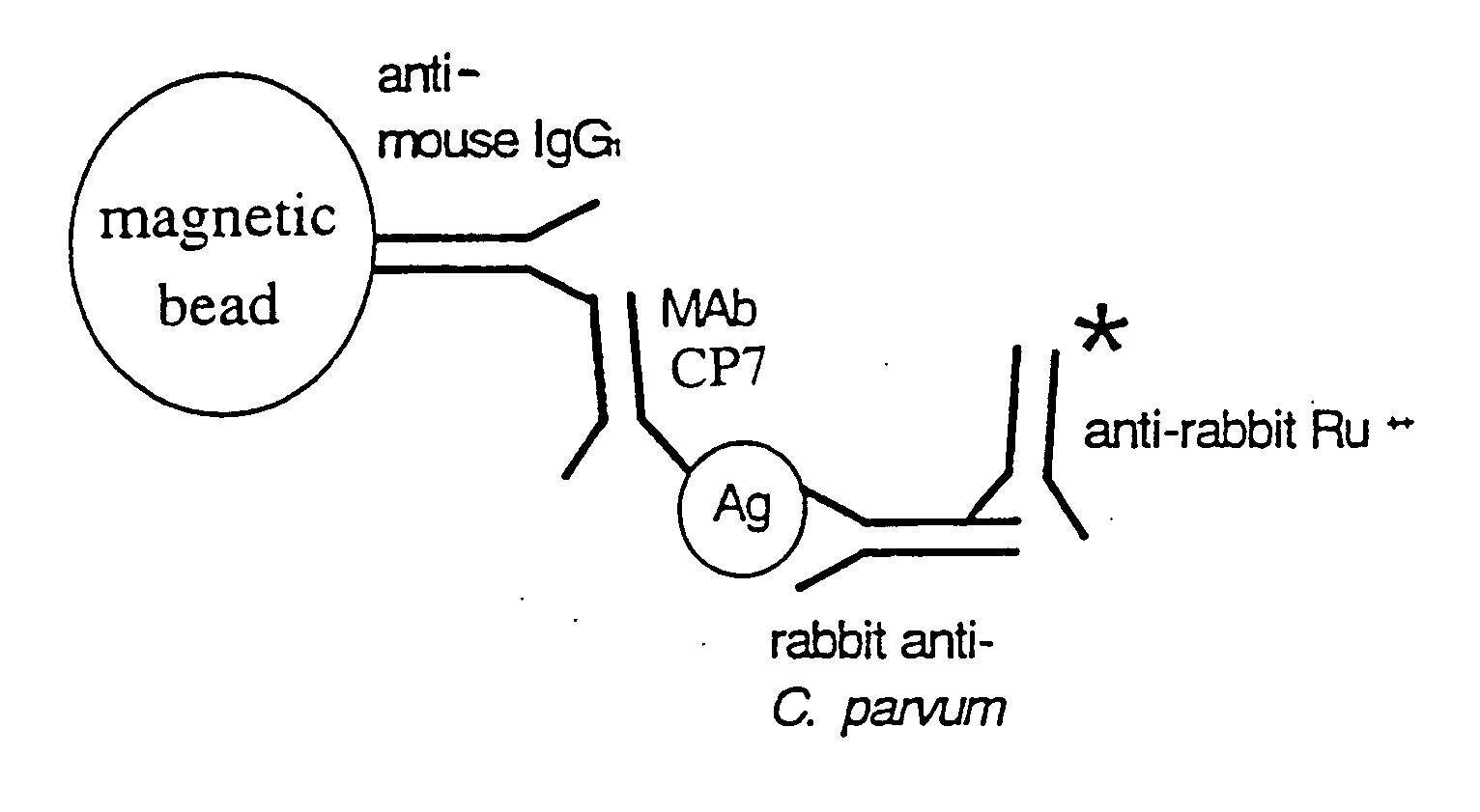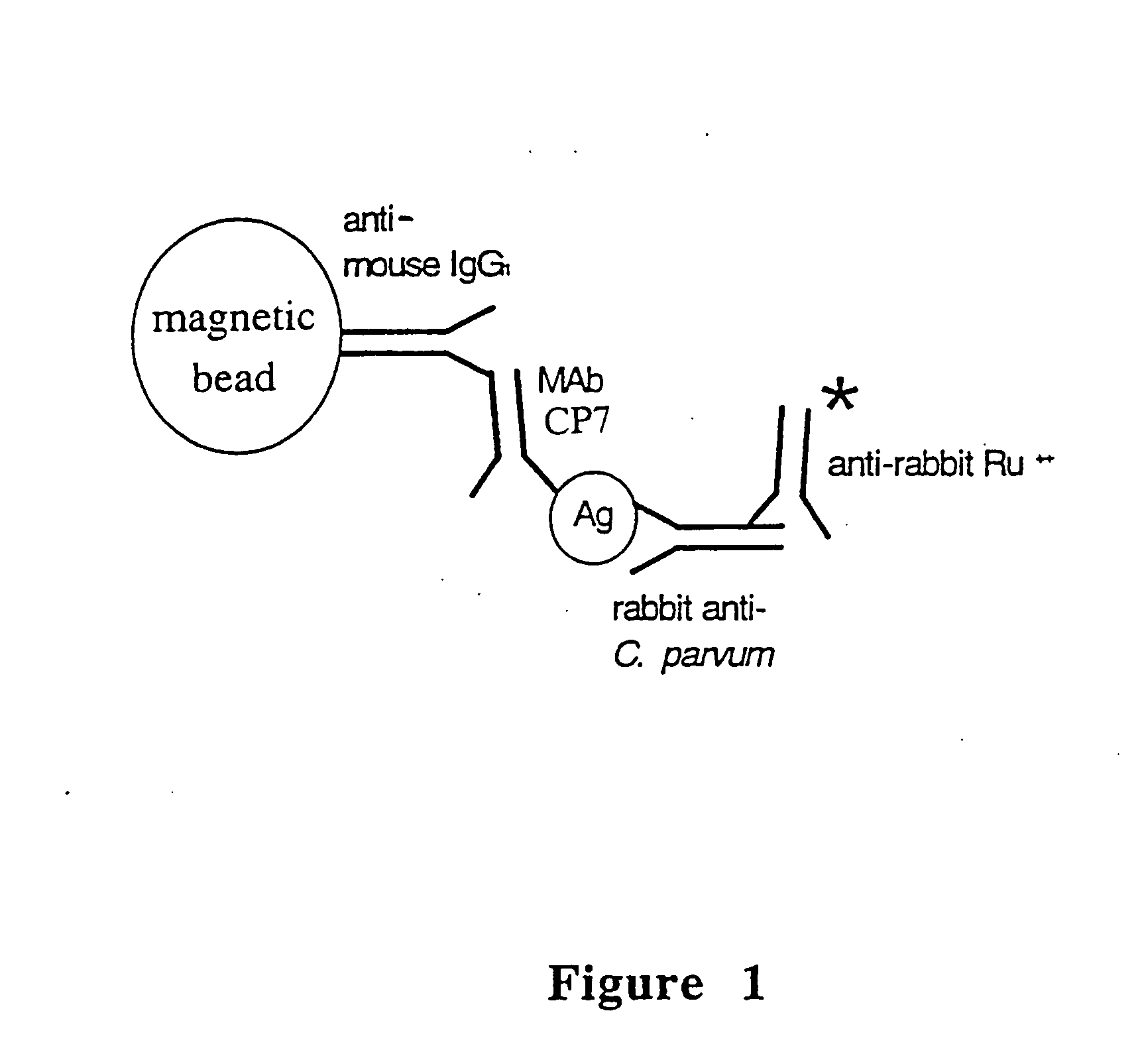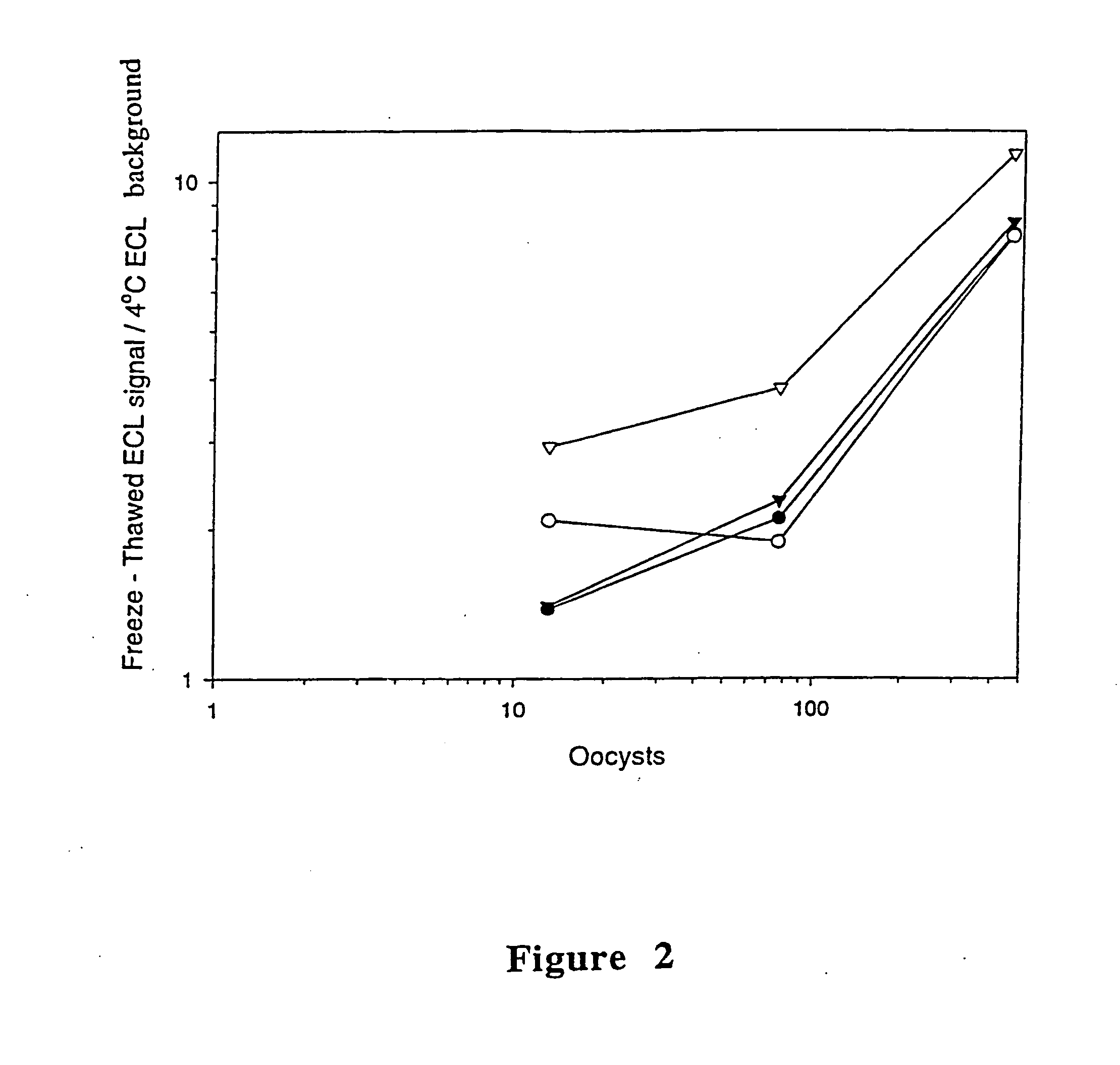Reagent and method for detecting a cryptosporidium parvum sporozoite antigen
a cryptosporidium parvum and antigen technology, applied in the field of immunology, can solve the problems of a high risk of immunocompromised individuals, children, immunocompromised individuals, medical personnel caring for patients with the disease, and the risk of being killed, etc., and achieves the effect of high sensitiveness and simple operation
- Summary
- Abstract
- Description
- Claims
- Application Information
AI Technical Summary
Benefits of technology
Problems solved by technology
Method used
Image
Examples
example 1
Preparation of C. Parvum Antibodies
[0081] Antibodies having binding specificities for C. parvum soluble sporozoite antigens are prepared as follows:
[0082]Cryptosporidium parvum oocysts used for polyclonal and monoclonal antibody production were propagated in newborn Holstein (Bos. tauris) calves at the Centers for Disease Control and Prevention, Lawrenceville, Ga. (Iowa bovine isolate, originally obtained from Dr. Harley Moon, (National Animal Disease Center, Ames, Iowa). These oocysts were purified from feces using discontinuous sucrose and cesium chloride gradients, and stored at 4° C. in 2.5% potassium dichromate until used as taught by Arrowood and Sterling, J. Parasitol. 73:314-319 (1987) and Arrowood and Donaldson, J. Parasitol. 81(3):404-409 (1996). The concentration of the oocyst suspension was determined in triplicate with a hemocytometer.
[0083]Cryptosporidium parvum oocysts (Iowa bovine isolate) used for the excystation assay development were obtained from Pat Mason (Su...
example 2
Optimization of C. Parvum Immunoassay
[0091] An immunoassay using the antibodies prepared in Example 1 was optimized for the detection of C. parvum in a water sample as follows:
Sporozoite Antigen for the Optimization of Assay Conditions:
[0092] To have a standard consistent antigen to optimize reagent concentrations and other assay conditions, a large batch of sporozoite antigen was prepared in much the same way as sporozoite antigen for monoclonal antibody production, as described in Example 1, with the following exceptions. After excystation of 1×109 oocysts, sporozoites were separated from oocyst walls using 3 μm PCTE microfuge spin filter (custom experimental design, Lida Manufacturing Corp., Kenosha, Wis.). To wash away antigens which may have been associated with oocyst walls, separated sporozoites were pelleted and washed twice with PBS. Separated sporozoites were resuspended in PBS and freeze / thawed four times, followed by centrifugation at 21,000×g, and the pellet was dis...
example 3
C. Parvum Immunoassay Sensitivity Analysis
[0107] The immunoassay described in Example 2 was analyzed for sensitivity as follows:
[0108] To provide a “worst case” example of high turbidity samples, lake water mixed with bottom sediment from three urban lakes in Atlanta, Ga. was used. The lakes were the Kelly Cofer Lake (lake A), Lake Erin (lake B), and Cardinal Dr. (lake C). Samples containing approximately one liter of water, with varying amounts of mud and bottom debris, were collected from each lake. Water and sediments were poured through a U.S. standard sieve, size 30, 0.59 mm (Dual Manufacturing Co., Chicago, Ill.) and stored in 0.1% azide at 4° C. NTUs of each sample were measured at 3125, 90, and 107 NTUs respectively (Turbidimeter, Industrial Chemical Measurement, Hillsboro, Oreg.).
Assay Sensitivity
[0109] To evaluate the overall sensitivity of the immunoassay described in Example 2, 1398, 231, and 39 oocysts were each titrated into 3 ml of each lake water sam...
PUM
| Property | Measurement | Unit |
|---|---|---|
| Mechanical properties | aaaaa | aaaaa |
Abstract
Description
Claims
Application Information
 Login to View More
Login to View More - R&D
- Intellectual Property
- Life Sciences
- Materials
- Tech Scout
- Unparalleled Data Quality
- Higher Quality Content
- 60% Fewer Hallucinations
Browse by: Latest US Patents, China's latest patents, Technical Efficacy Thesaurus, Application Domain, Technology Topic, Popular Technical Reports.
© 2025 PatSnap. All rights reserved.Legal|Privacy policy|Modern Slavery Act Transparency Statement|Sitemap|About US| Contact US: help@patsnap.com



